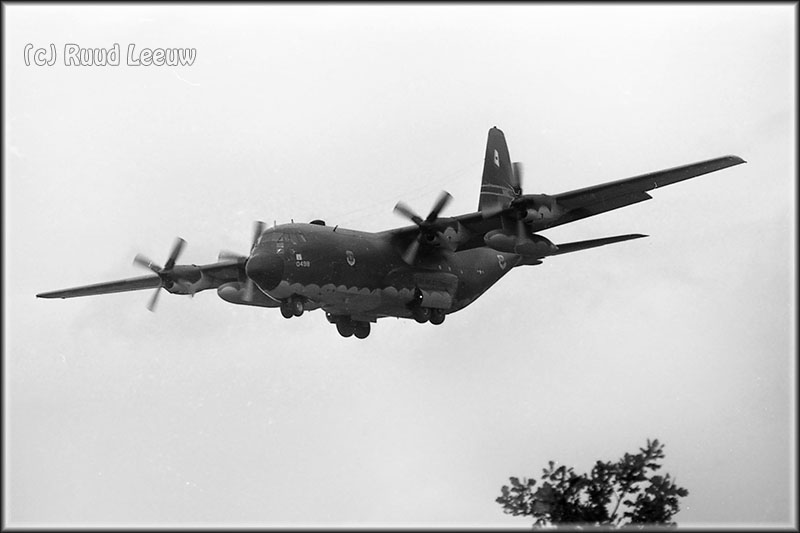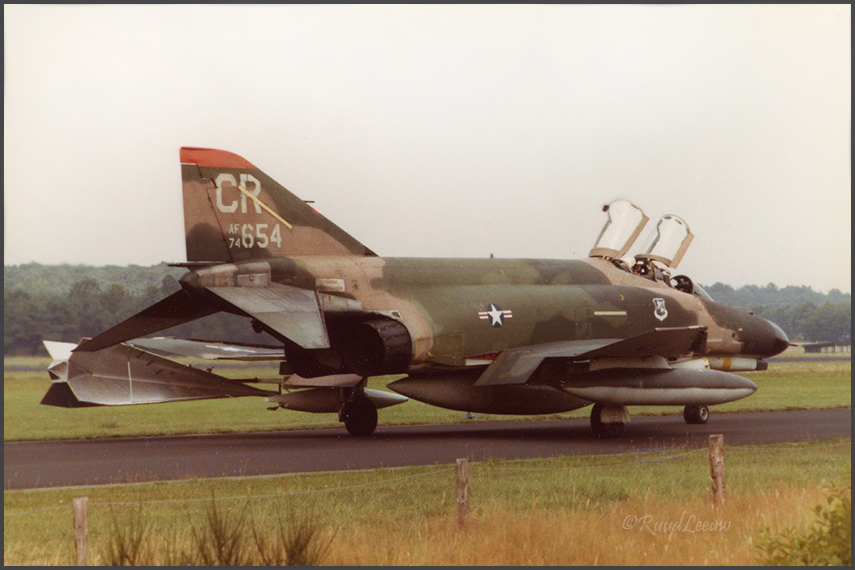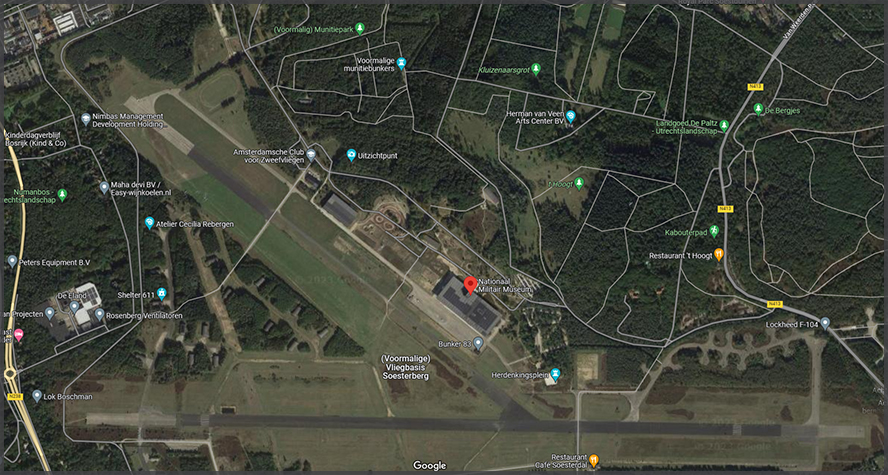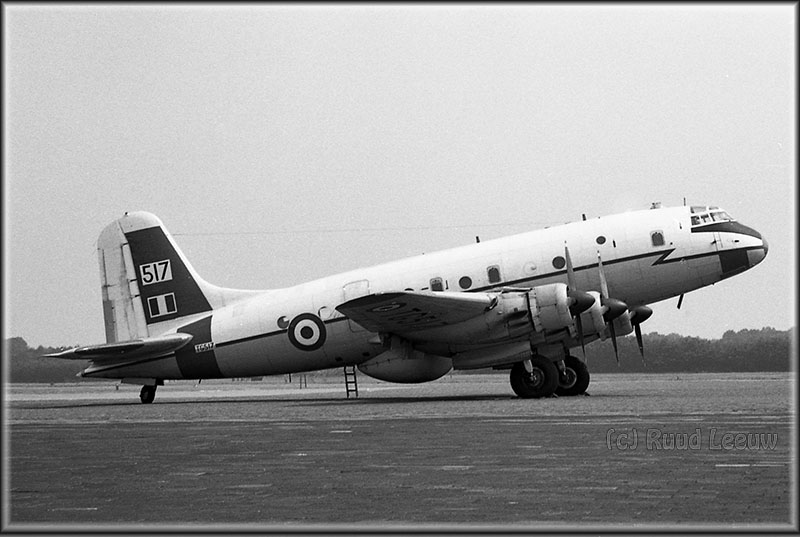 Handley Page Hastings T.5 TG517 of 266 Sqdn RAF.
Handley Page Hastings T.5 TG517 of 266 Sqdn RAF.
It supplied a spare propellor for BoB Spitfire PS853. 22Jun76
It was preserved at Newark Air Museum (Winthorpe, Newark, Nottinghamshire, UK. (Website)
Frederick (later Sir Frederick) Handley Page first experimented with and built several biplanes and monoplanes at premises in Woolwich, Fambridge and Barking Creek, before settling on works at Cricklewood in North London and Radlett Aerodrome, Hertfordshire. His company, Handley Page Ltd, became the first public company to build aircraft when it was founded on 17th June 1909. Few of his early projects were memorable, in spite of unusual names like Bluebird, Antiseptic and Yellow Peril, until he embarked on the O/100 in 1911, then the largest aircraft built in Britain. Used primarily as a heavy night bomber, the O/100 featured folding wings, an enclosed cabin with bullet-proof glass and armour protection, and engines mounted in armoured nacelles.
Imperial Airways' requirement for a larger aircraft for specific sections of the Empire Route was met with the HP42, an all-metal biplane with the first enclosed cockpit and accommodation for up to 24 passengers. First flown in November 1930, the HP42 served until the advent of war, when the company's production reverted entirely to military bombers.
The Handley Page Halifax bomber was one of the best known types of all the company's designs.
Long before the war ended, several transport designs were on the drawing board, including the Hastings, first flown on 25th April 1947 with four 1,675hp Bristol Hercules engines and capable of carrying 50 fully-equipped troops, and the four-engined Hermes, the first modern British airliner after the war, which made its first flight on 3rd December 1945. Twenty-five of the improved Hermes IV entered service with BOAC in August 1950.
A total of 50 high-wing, short-haul HPR7 Dart Herald airliners were built between 1959 and 1968, and the smaller 18-seat HP137 Jetstream was also put into large-scale production at Radlett. But the high cost of developing this aircraft forced Handley Page into voluntary liquidation on 8th August 1969, and, on 1st June 1970, one of Britain's best known aircraft manufacturers ceased to exist.
[Source: www.handleypage.com/History_page.html]
|
 Photos © Ruud Leeuw
Photos © Ruud Leeuw

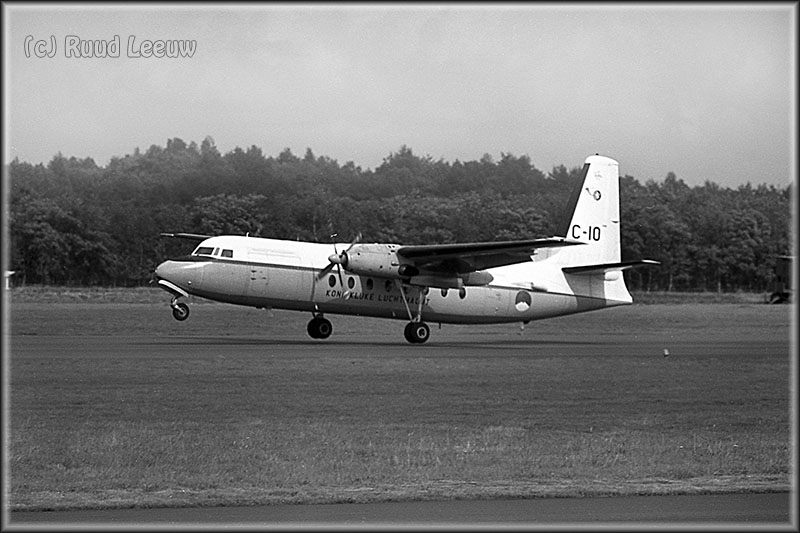




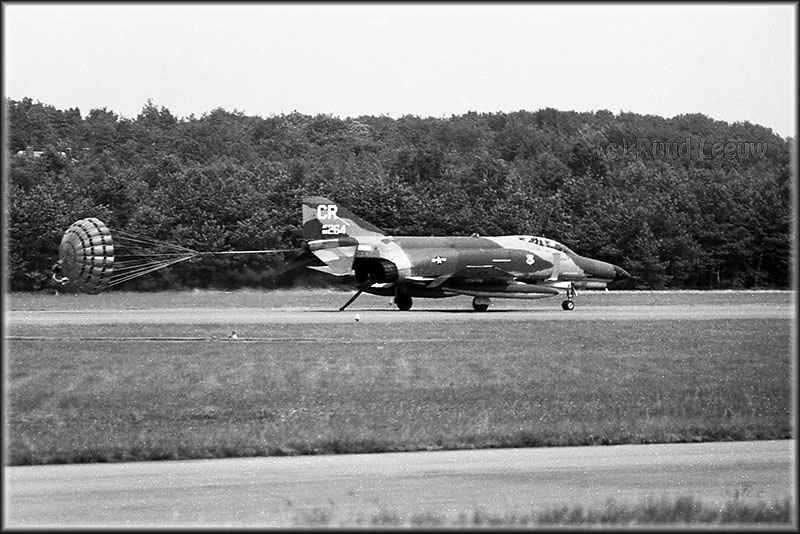

 The Supermarine Spitfire is a British single-seat fighter aircraft used by the Royal Air Force and many other Allied countries through the Second World War and on into the 1950s as a frontline fighter and in secondary roles. It was produced in greater numbers than any other Allied design. The Spitfire was the only Allied fighter in production throughout the Second World War.
The Supermarine Spitfire is a British single-seat fighter aircraft used by the Royal Air Force and many other Allied countries through the Second World War and on into the 1950s as a frontline fighter and in secondary roles. It was produced in greater numbers than any other Allied design. The Spitfire was the only Allied fighter in production throughout the Second World War.










 Pembroke WV729 RAF Wildenrath, 09Apr76
Pembroke WV729 RAF Wildenrath, 09Apr76




